With over 1,700 years of tradition in Korea, the teachings of Buddhism have shaped Korean temple food, training devotees in how to live healthily and harmoniously with nature. Along with that rich history, Korean temple food also encompasses a contemporary meaning beyond the scope of religion and is more widely known as a unique part of traditional culture.
[rpi]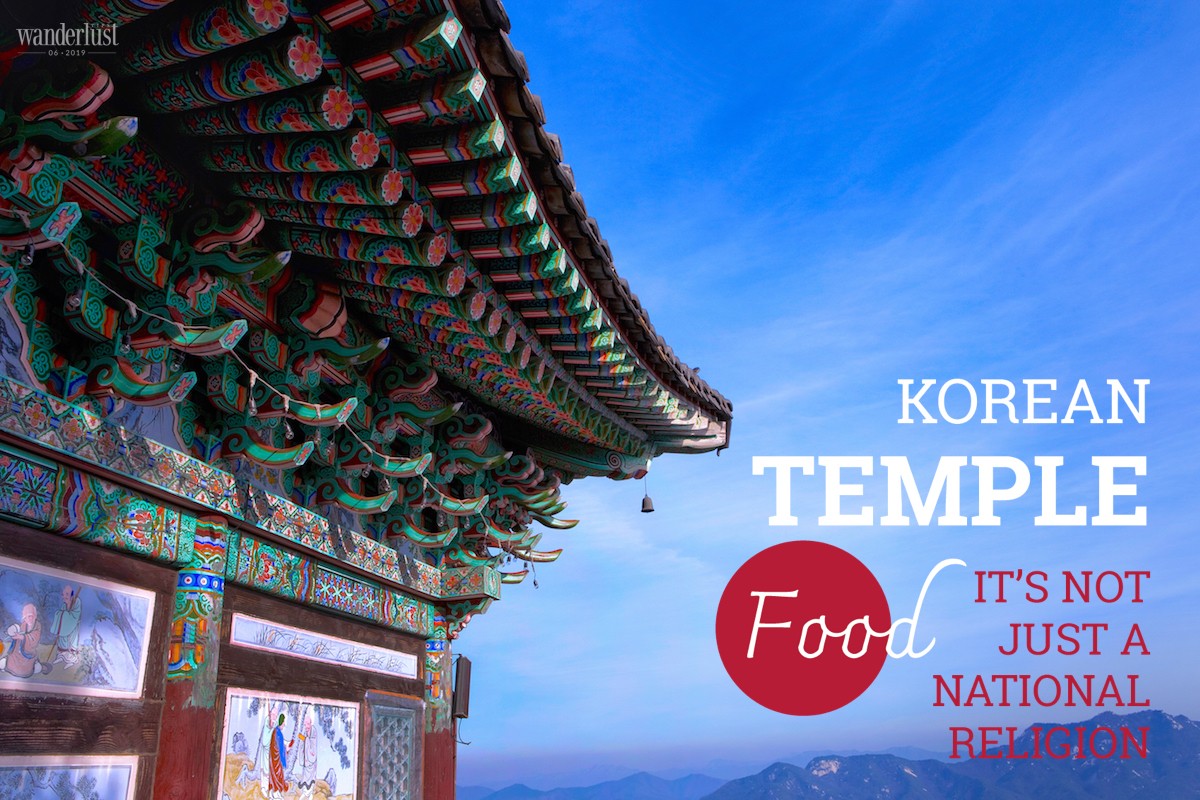
Temple food is a unique concept that refers to the food eaten daily in Buddhist temples around Korea. For every Buddhist, eating is not merely for taste, but also a sacred religious act to nourish the body and develop the soul. Different ingredients are carefully combined to teach a moral lesson of peaceful coexistence and the interconnectedness of all living beings and lives. Temple Food reminds us of the circle of life by showing how all humans, like food, are born from nature and ultimately return to it. For each Buddhist, eating plays an essential role in their life.
WHAT TO EAT
The Buddha taught that humans must have the compassion to embrace all beings as themselves and that eating meat extinguishes the seeds of compassion. Therefore, Korean temple food does not make use of meat or any animal products except dairy. Korean temple food has also traditionally meant that monks and nuns prohibit the use of five pungent vegetables called “o-shin-chae” which include onions, garlic, chives, green onions, and leeks because they hinder spiritual practice and disturb meditation.
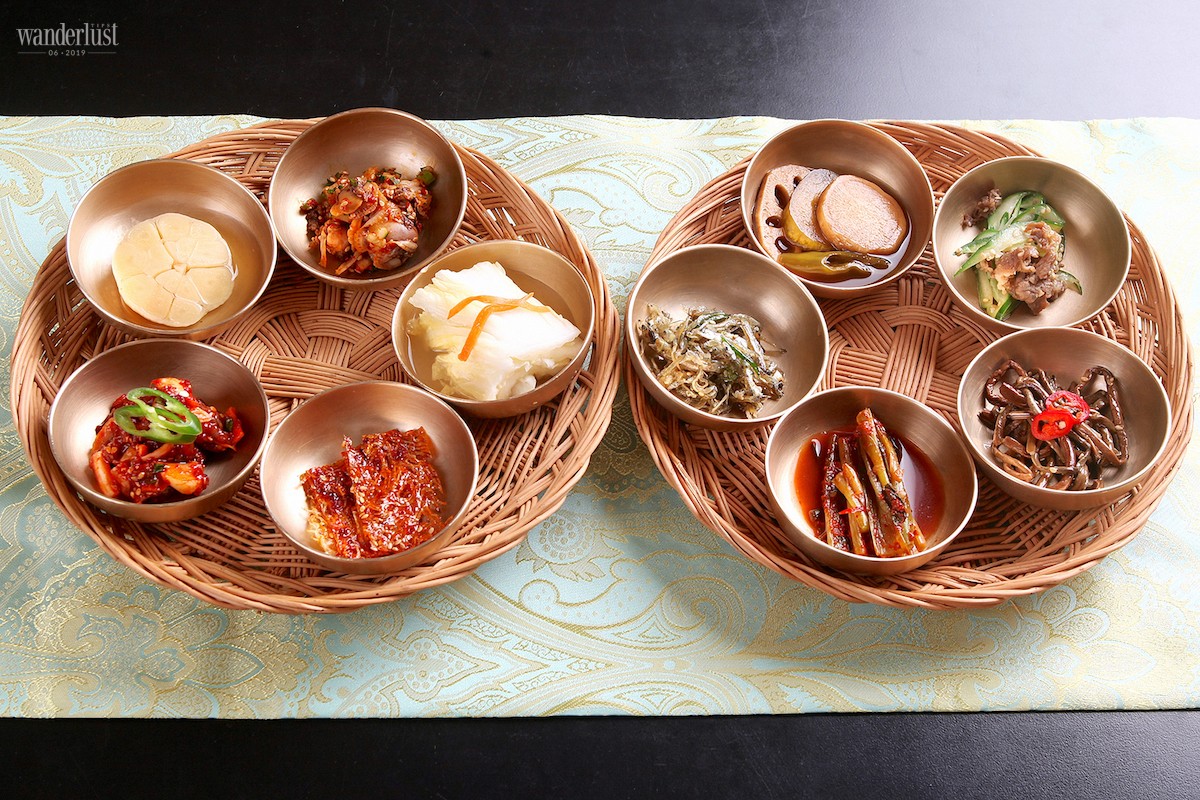
As most Korean temples are located in the mountains, instead of artificial flavors, a variety of mountain herbs and wild greens are used providing roots, stems, and leaves which are indispensable ingredients to create purely natural seasonings like kelp powder, perilla seed powder, uncooked bean powder, and pepper powder. These seasonings are used to correct nutritional imbalances and enhance flavors.
Korean temple food also incorporates a variety of fermented food like kimchi, soy sauce, and vinegar. The various nutritive elements produced through fermentation not only add flavor to the food but also lower the level of cholesterol, have cancer-inhibiting qualities, and slow down the aging process.
Korea has four distinct seasons, and all kinds of vegetables and plants are available in the spring. In order to keep these vegetables and plants for the winter, monks and nuns developed various techniques for food preservation like vegetables preserved in soy sauce, vegetables pickled in vinegar, and salted vegetables.
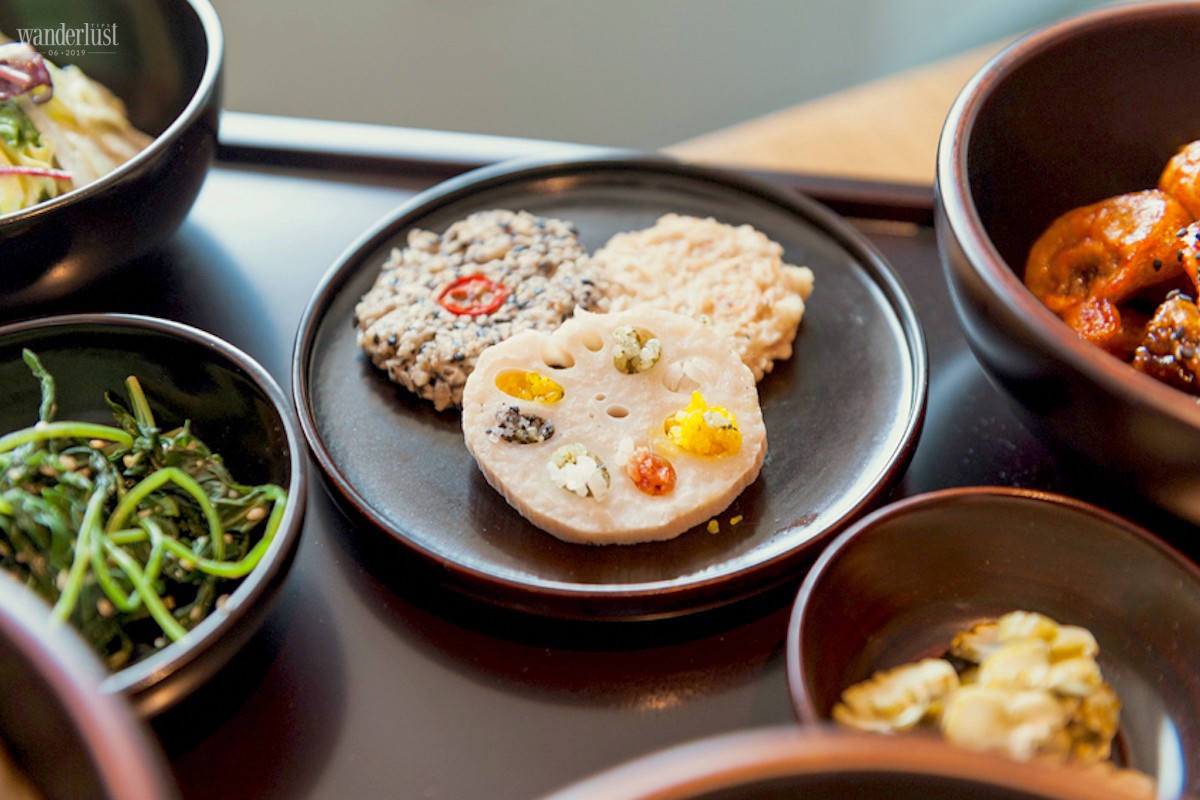
HOW IT’S EATEN
In Korean temple food culture, Baru Gongyang is a formal monastic meal and is an indispensable religious ritual in temples. Although this ritual is not performed for all daily meals, it is often used during formal ceremonies or in intensive meditation. For centuries, it has been a fundamentally essential feature of religious practices.
During Baru-meals, Buddhists use a set of wooden bowls called Baru. Each of the Baru bowls is defined by its simplicity and is produced for the sole purpose of eating. There are four wooden bowls in a set of Baru bowls including a Buddha Baru bowl for rice, a gook-Baru bowl for soup, a banchan-Baru bowl for side dishes, and a cheonsu-Baru bowl for water. These bowls have a variety of different sizes for convenient storage and portability.
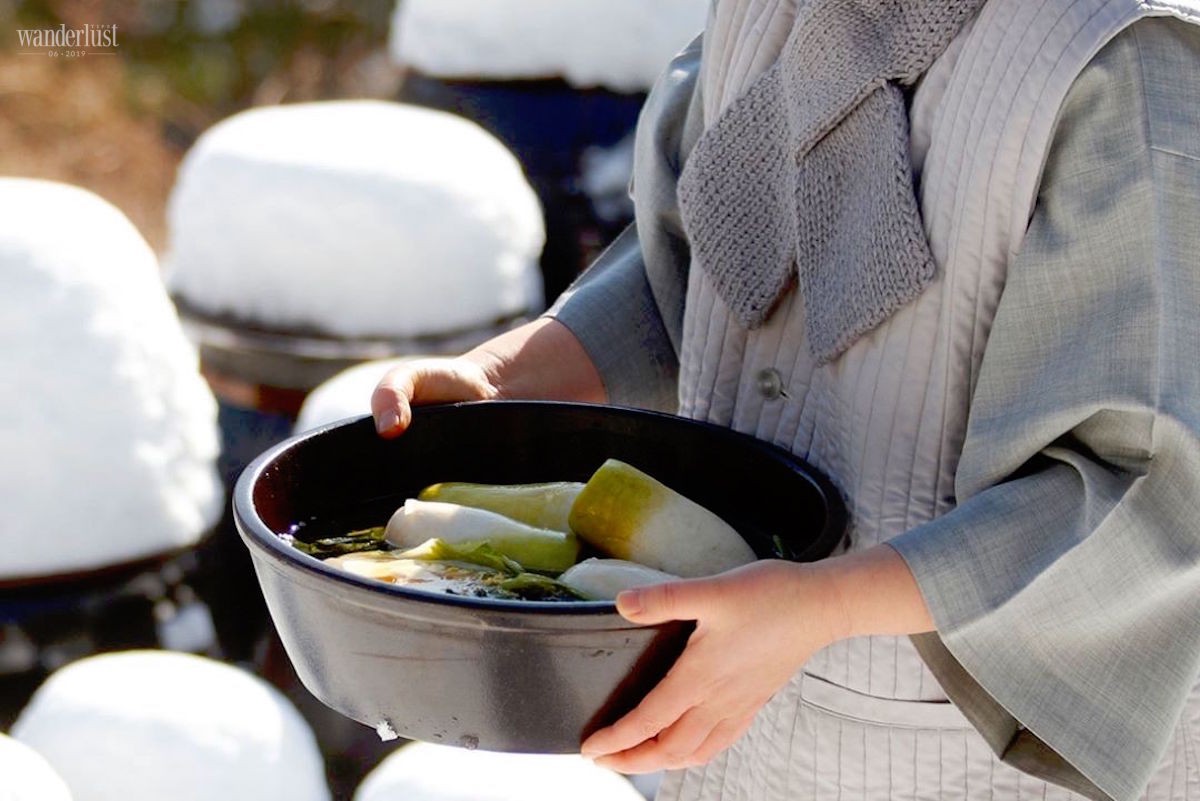
The temple food is always cooked by dedicated chefs from natural, nutritious ingredients. According to Buddha’s teachings, every Baru bowl filled with food symbolizes a blessing that every Buddhist has been given. In contrast to this, an empty Baru bowl or a carelessly-served one shows a mind that should be refreshed instead of being filled by sufferance and negative thoughts. Thus, eating is also a meditative method to practice religion, regulating behavior and the mind.
As it is a ceremonial meal, participants need to strictly comply with each regulation and step, which are all completed according to the sounds of a bamboo clapper from the beginning to the end of the meal.
An impressive highlight of the Baru Gongyang is that participants have to read a sutra before the meal to remember where the food has come from, how it was cooked, and whether or not they are worthy of enjoying it. The meal is nourishing both physically for our body as well as spiritually for our mind, and hopefully leading along the path of enlightenment. After the sutra, each person sets aside a small portion of their rice, which is gathered in a communal bowl as a symbolic gesture of sharing food with all hungry beings.
During the Baru-meal, participants need to practice harmonious eating by keeping pace with others and remaining in total silence, even the sound of utensils clinking is not allowed. As well as this, only a sufficient amount of food is eaten for physical sustenance, and no uneaten food is left in bowls even if it is only a grain of rice or some chili powder. The reason for this is that according to Buddhism, each helping to nourish our body and life, so we should not waste food. One more reason is that Baru-meals are the most environmentally friendly way of eating because it doesn’t produce any left-over waste. Only a piece of kimchi can be left to wipe up any left-over food in the bowl at the end.
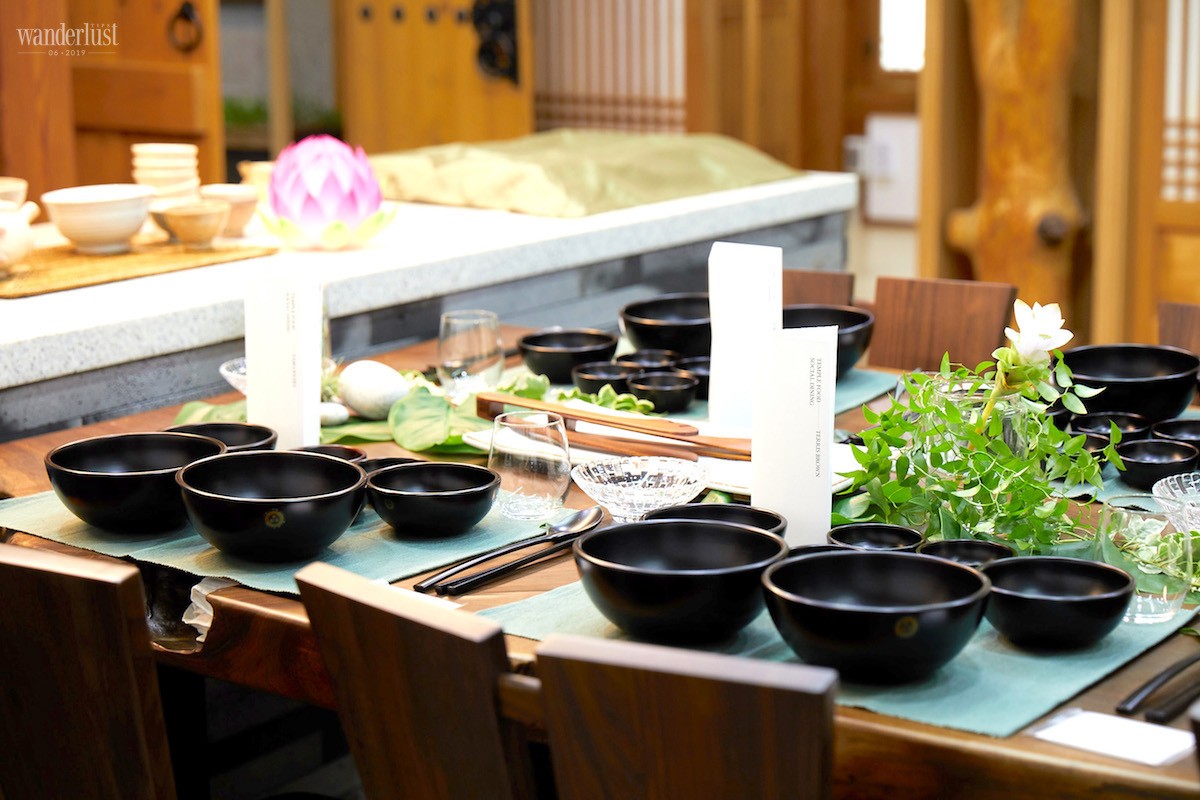
KOREAN TEMPLE FOOD THROUGH THE EXHILARATING EXPERIENCE OF TEMPLE STAY
Nowadays, temple food including Baru Gongyang is becoming increasingly popular not only in the sphere of religion but also in cultural experience programs like Temple Stay at large temples nationwide. The Temple Stay offers excellent opportunities for visitors to experience Korean Buddhist culture, including its lifestyle, rituals, principles and the spirituality of the local people every day. A variety of visitors have chosen Korea as an ideal attraction for their unique monastic experiences at a Buddhist temple and participated in daily religious activities that help them find inner peace.
Temple Stay is a great choice for not only solo travelers or group trips but also families. This is an amazing opportunity for the whole family, especially children, to learn to live independently, comply with regulations, moral discipline, and practice healthy habits. More importantly, dishes in meals and the way people treasure every grain of rice, every drop of water, or pieces of kimchi also teach children to live harmoniously with nature as well as to appreciate and use properly what they have. Children will know how to love people, care for and share with less fortunate people and appreciate the life of all beings.
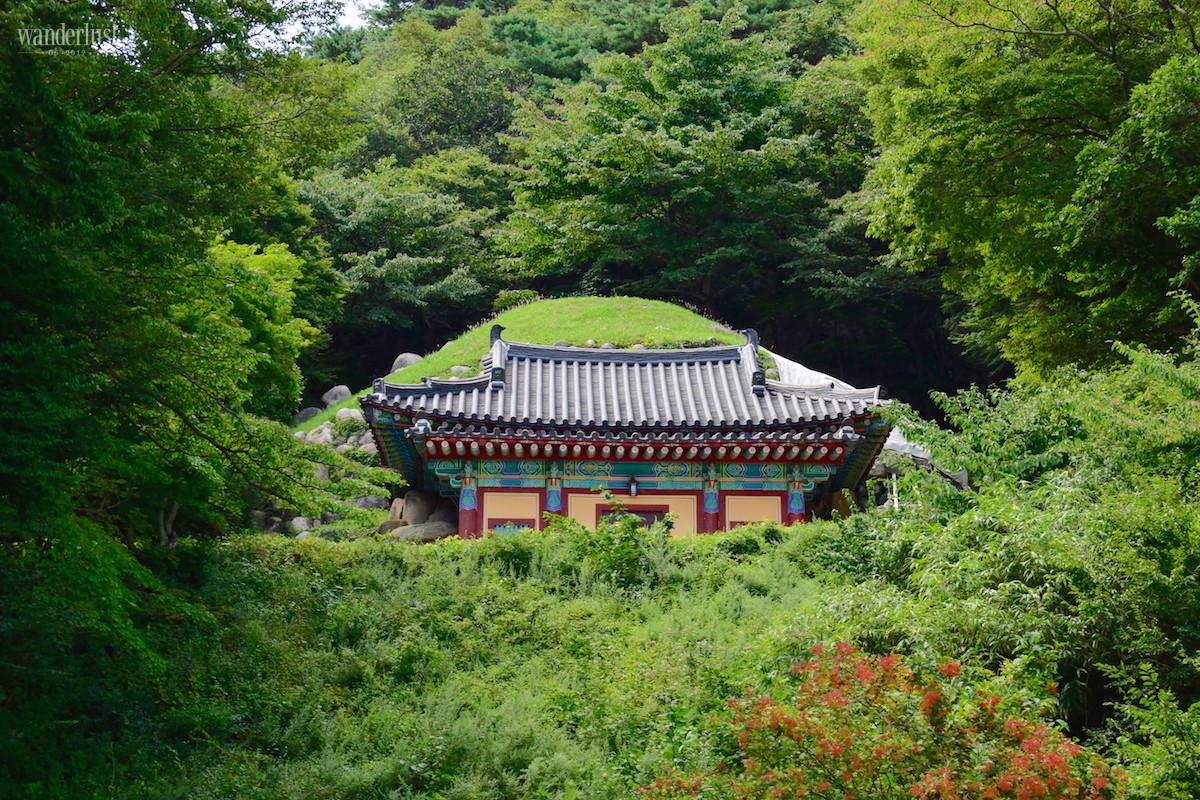
In a nutshell, temple food and Baru Gongyang are a way for human beings to think about nature and community as well as to express deep gratitude to all beings. It is said that a meaningful trip to beautiful Korea will bring valuable experiences and lessons to your family.
Wanderlust Tips

